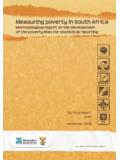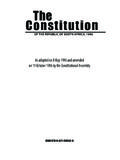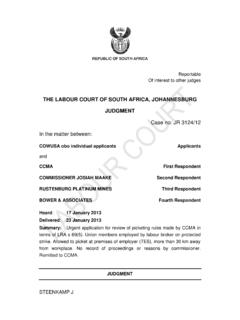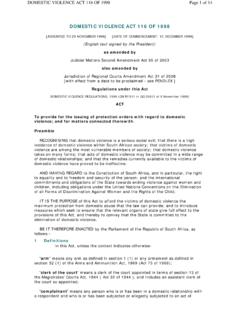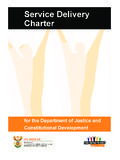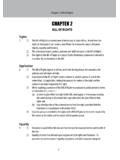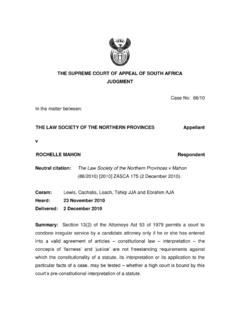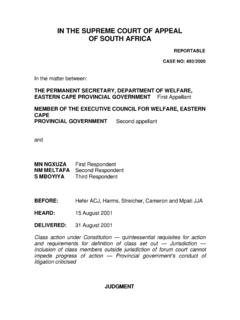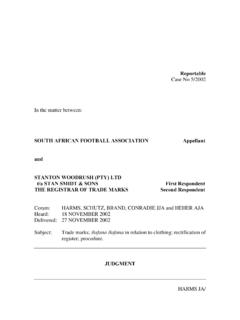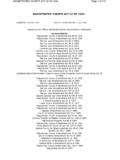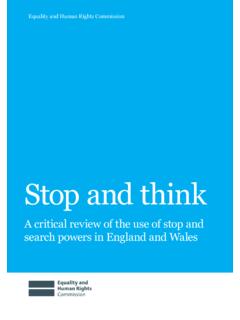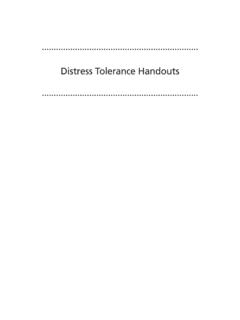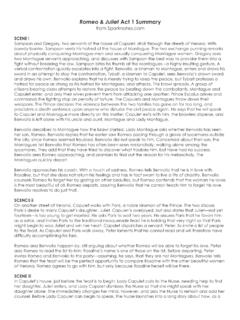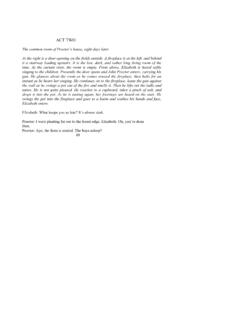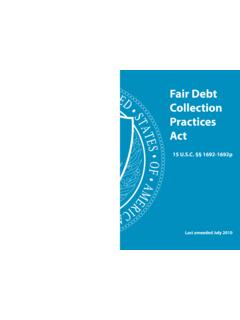Transcription of THE Children’s Act EXPLAINED
1 THE. Children's Act EXPLAINED . Booklet 1: Children and parents rights and responsibilities Table of contents How to use this booklet 1. Children's rights & responsibilities 3. Introduction 3. General principles (Chapter 2) 4. Parental rights & responsibilities 11. Introduction (Chapter 3) 11. Rights & responsibilities (Chapter 3, Section 18) 14. Co-exercise of parental responsibilities (Chapter 3, Section 30) 23. Parenting plans 24. Artificial fertilisation (Chapter 3, Section 40) 26. Surrogacy (Chapter 19) 27. Adoption (Chapter 15) 28. Glossary 35. Useful contact numbers 40. b How to use this booklet This booklet introduces you to the Children's Act and talks about the general principles in the Act.
2 In this booklet (Booklet 1) we try to explain, as simply as possible, the different rights and responsibilities that children and parents have. There are another two booklets in this series. Booklet 2 talks about prevention, early intervention and care, and Booklet 3 looks at the courts and how the Act can protect children. All three booklets are important and sometimes you will find that information is repeated in more than one booklet or you are told to look at another booklet to find out more about a specific topic. To help you on your journey through each of the booklets there are three characters, two who are learners and one who is a teacher. Vusi, Mirasha and Ms Pandori will be there to discuss the Children's Act with you.
3 This booklet has been written for children between the ages of 11. and 15 years. However, older children and grown-ups can also benefit by reading it and they may be able to help younger children understand the difficult bits. The Children's Act has many chapters and sections; a chapter gives the main headings in the Act and under each heading there are lots of sections; each of them numbered. You will notice that these booklets are also divided into chapters and sections for easy reference to the Act. The booklets do not look at every single chapter or section in the Children's Act. Only the bits that speak directly to children are included in the booklets. Because of this you will notice that sometimes the numbers are not always in order and sometimes the numbers jump around.
4 At the back of the booklet there is a glossary that helps explain any difficult words in the Act. There is also a list of useful contact numbers that you can call if you need help during times of trouble or if you just need some advice or information. 1 1. For easy reading we have used lots of different symbols. These symbols will help you recognise certain types of information. The symbols will look like this: When you see a note with a paperclip you will know this is an important point to remember. A picture showing a pile of books will tell you this is a story about someone and it will give you an example of a situation relating to the information on those specific pages. When you see a hand it means that this is something that is not allowed.
5 2. Children's rights & responsibilities Introduction Hi. My name is Vusi . and mine is Mirasha and we're here to tell you about the Children's Act. The Children's Act is a legal document that was created to help protect children and make sure that your rights are respected. The Children's Act is there to protect you and to make sure that you are taken care of, no matter who you are, where you live and who takes care of you. This Act is there to help keep families together and make sure a child is cared Did you know? for by family or parents, or is placed in alternative care, when there is no family. It is important to The Act talks about protecting children remember that the from abuse, harm and neglect and to best interests of the do this, many different services and child' comes first.
6 This resources need to be made available for is the ruler against children. which everything to do with a child is measured. 3 3. General principles (Chapter 2). Hi. I am Ms Pandori, and I am going to be here to help explain some difficult terms in the Children's Act. To start with I'd like to tell you about the bigger picture and introduce you to some general principles. These are terms and concepts that come up time and again throughout the Act. An example of a general principle is the saying, the best interests of a child'. Even though it is used in different places throughout the Act, the way it is used never changes. You will find that the Act has many general principles and these will be explored in detail as we go on.
7 What the Act says is that when the Did you government has to make a decision or do know? something that involves children it has to Sometimes the think about the legal and personal issues that government is also will affect children. called the state. The Act says that the state has to respect: The rights of all children in The child's need for South Africa. These rights are development and contained in the Bill of Rights in growth. A child needs the Constitution. The Constitu- to be able to play and tion clearly states that children's engage in activities that rights must be promoted, pro- suit the child's age and tected and respected. developmental capacity. The dignity and worth of The right of children the child.
8 The state must with disabilities to make sure that all children are be encouraged and treated equally and are not supported whilst taking discriminated against. care of their special needs. 4. Another point that needs to be remembered when looking at children's issues is that the family and the child have a right to be heard. If it is in the best interests of the child' then the family will be given a chance to express their points of view even in times of conflict: The right to be heard is so important that the Act gives examples of how families and children should be heard. The Act talks about the need to both hear and guide a family in conflict, to keep the parents informed of any decisions that are made about their child, or to listen to a child when decisions are being made that will affect the child.
9 Best interests of the child (Chapter 2, Section 7). Vusi says: The best interests of the child' are the first things to think about when making a decision that will affect the child. Sometimes when a child's best interests are ignored the child ends up in an even worse situation. The story about Susan will help illustrate this.. Susan lived in a home where the parents fought all the time. One day a social worker came and took Susan away and put her in foster care with a new family. Susan was very unhappy. She missed her mother and father every day and her sadness made her ill. Susan's best interests were not considered. If Susan was asked what she wanted she would have said that she loves her parents, and she just wants the fighting to stop.
10 Mirasha says: The Act wants people to always think about what is best for the child. The Act is concerned about the child's personal relationships, the child's emotional and intellectual needs and any big changes in the child's life that would affect him or her. 5 5. The Act says that it is also important to look at the attitude that the parent has towards the child and the attitude the parent has about his or her duties as a parent. Other factors that need to be considered are the age, the gender and the background of the child and whether the child has any disability, illness or any special needs. All the above issues should be considered with care, but if a child is in need and faces the possible threat of physical or emotional harm then the child needs to be helped quickly, without exposing the child to any more harm.
